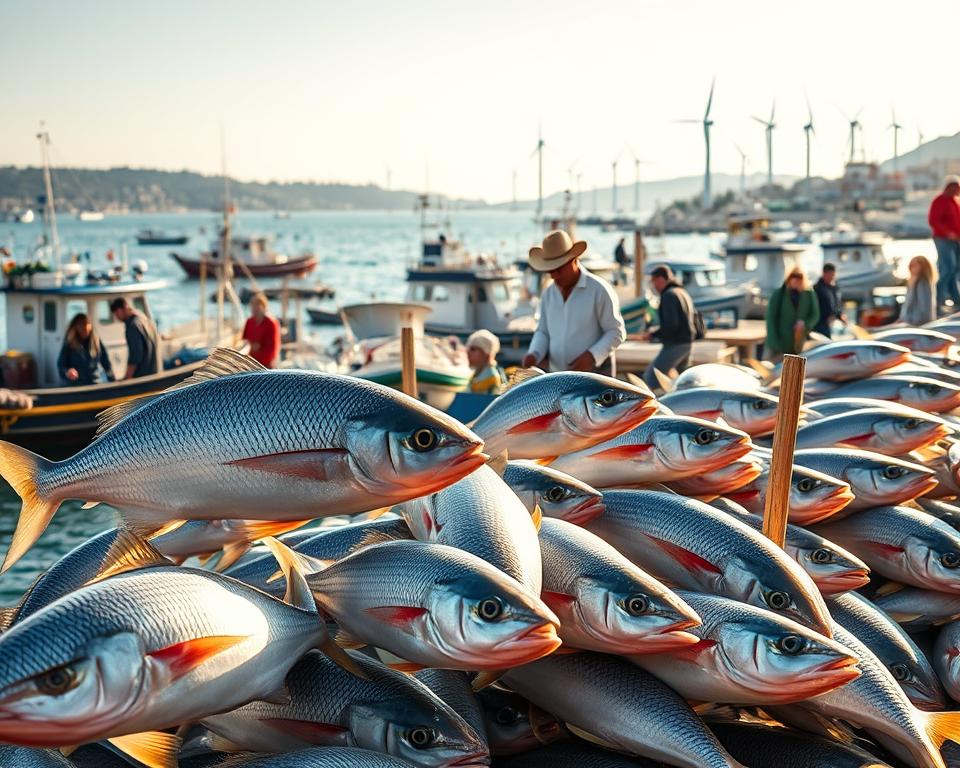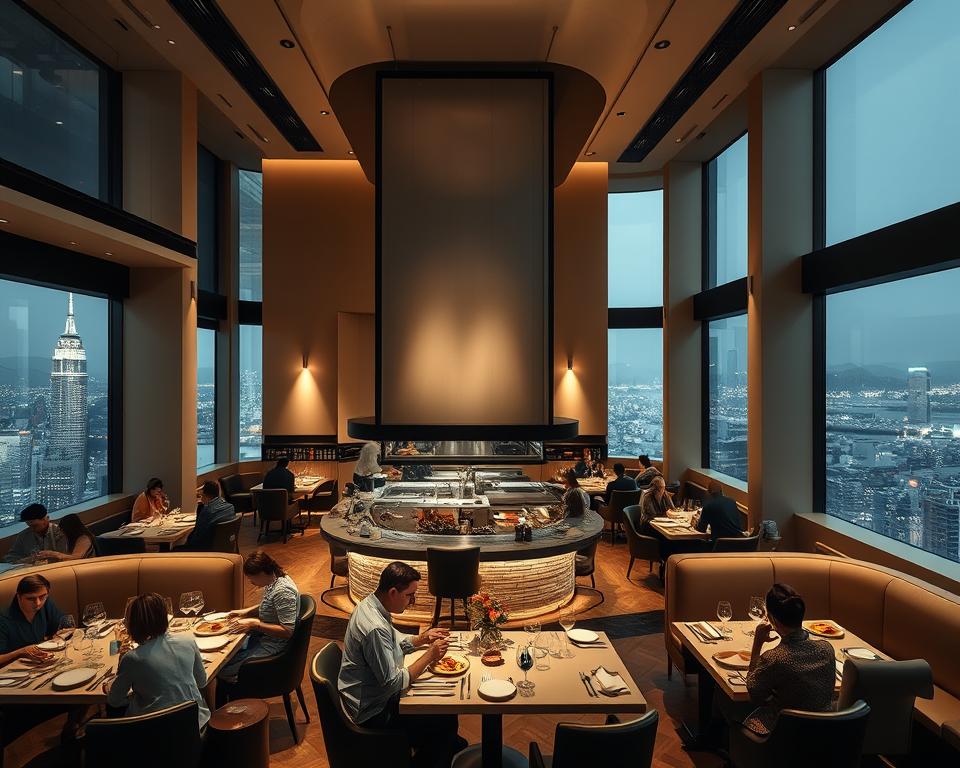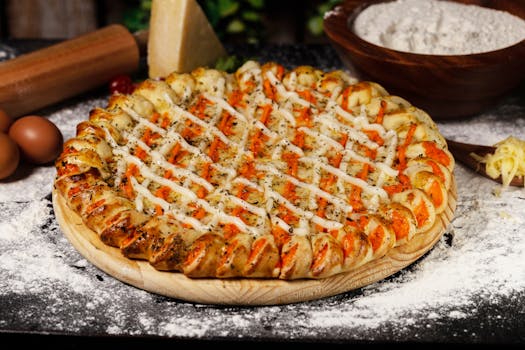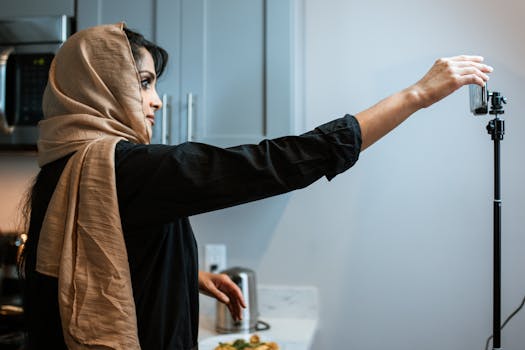Annunci
culinary guide 2025 puts the world of food and travel in your hands so you can plan the year with calm confidence.
Why trust this resource? You scan credible news, compare destinations, and spot restaurant openings—like what’s new in New York and the MICHELIN Guide Texas return to Houston—so your short list matches real-time reports and booking options from OpenTable and Resy.
Use this friendly, practical overview to set the table for your days out and trips. You get a clear snapshot of cooking trends, wine picks, and neighborhood signals that matter when you choose a place or plan reservations.
What you’ll gain: quick ways to weigh value, luxury, and access; tips on hotels for wine lovers and MICHELIN Key properties; and simple actions to follow the most current news without guesswork. For health matters, consult qualified professionals.
Introduction: Why a culinary guide 2025 matters for how you’ll dine next
Think of this introduction as a short compass for how dining in U.S. city scenes will feel and flow in the coming season. You get clear context for today’s choices and simple ways to spot what changes your table, menu, and service might show.
Annunci
Context and relevance for U.S. diners
Inspectors and publications track shifts so you know what to expect when you book. MICHELIN inspectors forecast trends across beverages, sustainably sourced seafood, and premium items like caviar. The Guide’s history and methodology are published on the official site, which helps you trust rankings and alerts.
How inspectors, chefs, and cities shape your next meal
- You’ll see how chefs change menus to match seasonality, sourcing, and guest tastes.
- Restaurants are evaluated on craft and consistency, which affects where you reserve a counter seat or a neighborhood table.
- City dynamics — who is cooking where — help you choose neighborhoods that match your plans and budget.
Use this section to combine inspector insight with your own flavor preferences. That way you pick formats and price points that suit your plans and enjoy food that feels timely and true to place.
What’s trending now: Fine dining meets culture, sustainability, and tech
The latest shift pairs refined technique with local stories, changing how you look for a table. Expect fine dining to read like a cultural statement as much as a tasting exercise. Chefs combine traditional cooking with modern methods so each experience feels rooted in its place.
Annunci
From tasting menus to neighborhood spots: where experience leads
Match the room to your mood. Tasting formats have become more flexible, with shorter counters and longer ceremonies coexisting. Neighborhood spots give weekly comfort; destination tables deliver ceremony and elevated dishes like refined chicken courses and seafood with luxury accents.
Signals to watch: stars, Bib Gourmand, Green Star, and hotel keys
Read badges to decide quickly. Stars point to technical excellence. Bib Gourmand flags strong value. Green Star signals real sustainability. MICHELIN Key hotels add context for trips and wine-friendly stays.
- You’ll notice more non-alcoholic pairings and tighter sourcing for seafood.
- Chefs use discreet tech—reservations, menu transparency, inventory—to improve service without losing warmth.
- Use these signals to pick spots that match budget and the flavors you want, whether in New York or your own neighborhood.
The MICHELIN view: New York openings, Texas news, and cities to watch
Track the MICHELIN pulse in key cities so you can spot openings and plan must-visit tables. Use official lists to prioritize where you try first and avoid missing limited tasting menus or soft openings.
New York today: notable openings to have on your radar
For new york dining, check the “What’s New in New York?” list regularly. That list highlights restaurant launches, tasting counters, and chef projects you’ll want to book fast.
Texas: MICHELIN returns to Houston for the reveal
The michelin star announcements will land in Houston, creating buzz across the state. Expect energy around chefs, awards, and city momentum as distinctions are revealed.
How to follow additions and plan your table
- Follow official additions weekly to spot a rising spot before demand swells.
- Book via OpenTable or Resy to secure tasting counters and high-demand tables.
- Filter your short list by what you want to eat—seafood, chicken, vegetable-led plates—and plan wine choices ahead to speed service.
Remember: michelin stars signal excellence, but neighborhood charm and chef energy often make the meal memorable. Build a short list and pivot if plans change.
Plant-based perfection in 2025: produce-forward menus and refined technique
Vegetables now take center stage, showing how precision cooking turns produce into headline dishes.
Look to Plates in London, Ark in Copenhagen, and Alchémille in Alsace as clear examples of this shift. These rooms build menus around seasonality, texture, and method rather than relying on animal products.
The trend in practice:
- You’ll see menus where vegetables lead, backed by precise cooking that builds depth without dairy or meat.
- Chefs use fermentation, rich vegetable stocks, and smart roasting to layer umami and texture in every dish.
- Seasonal cuisine is framed as craft—farm partnerships and seed-to-service stories appear in concise dish notes.
- From cafes to destination rooms, plant-forward tasting paths give better-tasting options at every price point.
When you read a menu, watch for clear provenance in short dish descriptions. That’s how you spot peak-season produce and trust return visits will feel new.
Unusual toppings and ingredients: caviar moments, ash, and low-sugar creativity
Expect surprises at the edge of a plate: salty pearls, ash accents, and desserts that reach for bright fruit instead of heavy sweetness. Chefs pair high and low to create playful contrast you can taste in one bite.
High-low play is literal: Coqodaq in New York puts caviar on chicken nuggets, turning a snack into a conversation piece. Quince in San Francisco flips the script with a caviar-infused panna cotta that balances salinity against cream and aromatic notes.
High-low play: nuggets with caviar, caviar-infused panna cotta
These dishes show how a single topping changes the whole dish. A crunchy chicken base gains silk and brine from fish roe. A delicate panna cotta takes on a savory edge without a heavy sauce.
Rethinking sweet: fruit and birch sugar over refined sugar
Across menus you’ll see desserts that use fruit reductions or birch sugar, as at Pavyllon in Paris, to highlight natural flavors. Ice cream courses sometimes lean savory—herbs, oils, or even a touch of caviar—so sweetness stays in check.
- You’ll find ash and charcoal used for aroma and color, not mere shock value.
- These moves appear on tasting lists and casual restaurant snack menus alike.
- Pair a savory-leaning dessert with a crisp wine or a zero-proof pour for balance.
- Read dish notes closely: toppings often hide precise gelation or infusion technique.
“Chefs are using contrast to make each bite tell a short story,”
Fire on the line: flame-cooked flavors from Texas barbecue to Kyoto
When food meets open flame, you feel a richer set of tastes—char, smoke, and caramelized edges that tell a story. Live fire builds Maillard depth and a gentle bitterness that electric methods rarely match. That touch is why inspectors are noting a rise in open-fire cooking across cities.
Wood, smoke, and wok hei: why open fire tastes different
You taste the fire in three ways: the caramelized crust, aromatic smoke, and brief bitter notes that balance fat. Different woods change aroma and time on the heat shapes texture—from crisp edges to melting fat.
U.S. heat: 28 barbecue restaurants and the craft of slow smoke
In the U.S., Texas anchors the tradition. The MICHELIN Guide lists 28 barbecue restaurants, so you can plan a trip around smoke styles and sauce preferences.
- You’ll compare brisket tenderness, rib bark, and sausage snap to pick a restaurant that fits your ideal plate.
- Look abroad for nuance: wok hei in Asia, binchotan for seafood, or Kyoto’s subtle char at La Bûche and others like Brat, Bar Kar, and Embers.
- For pairing, choose sparkling or acid-forward wine, a bright tea, or a non-alcoholic pour to scrub the palate.
“Plan around cook times and arrive early—sell-outs and counter queues are part of the rhythm of open-fire dining.”
Southeast Asia’s fresh take: tradition, technique, and global outlook
You’ll notice a confident new voice in Southeast Asian cuisine that balances tradition and invention.
Dewakan in Kuala Lumpur and Seroja in Singapore show how returning chefs combine local produce with refined methods to clarify broths, intensify flavors, and refine texture.
Inspectors note a surge across Malaysia, Vietnam, Singapore, and Hong Kong toward east-meets-west plates that feel light yet layered. You can choose travel plans by how menus read—heritage dishes reinterpreted, tasting sequences, or communal formats that invite sharing.
Look for kitchens that work directly with small producers and explain each course. These rooms often pair tea progressions or sake with spice and herbs instead of relying only on wine.
- You’ll find cooking that uses smoke, aging, and ferments with restraint.
- Follow specific chefs who returned from abroad to create distinct, place-driven experiences.
- Use short menus that change monthly to build repeat visits and see evolution.
“Pick dining rooms where service tells the story—your meal will feel grounded and generous.”
For planning, start a short list of cities and then read menus online. If you want inspiration before you go, check a curated list of must-try food experiences to match expectations and book smart.
China’s culinary renaissance: imperial echoes and modern craft
China’s plates now carry centuries of ritual alongside bold, modern technique. You’ll find menus that honor courtly history while testing texture and temperature in new ways.
Beijing stages ceremonial service that recalls imperial banquets. Restaurants recreate refined Peking duck and multi-course sequences with theatrical service and tight timing.
From royal cuisines to boundary-pushing menus
In Shanghai, rooms such as Hakkasan and Obscura blend Western methods into classic roast pork and seafood. A chef might keep a signature sauce but change the texture or plating to shift the story of a dish.
- You’ll encounter history on the plate, where imperial banquets inspire modern sequencing.
- Look for precise cooking—roasting, braising, and knife work—that defines quality.
- Read stars and three michelin ambitions as signs of consistency and long-term vision, not just flash.
Inspectors predict broader global recognition as China’s regional cuisine and coastal-to-inland flavors get fuller attention. Time your trip around expected michelin star announcements to catch momentum and new tasting menus.
“You can trace centuries in a single course when provenance and technique align.”
How chefs are rethinking impact: the Green Star and beyond
You’ll spot more kitchens that treat waste, energy, and sourcing as central craft elements. The Green Star highlights teams that go beyond a single dish to redesign operations.

Look for names like Baldío, Acre, Brutø, and The French Laundry as examples of scale and intent. These rooms use fermentation labs, whole-plant or whole-animal work, and sauces built from trimmings to lift flavors while cutting waste.
Responsible seafood appears when restaurants describe technique and source. Techniques such as ikejime or named fisheries tell you more than a vague label. That detail signals a team thinking about supply chains and animal welfare.
What you can do as a guest: ordering and leftovers with intention
Practical moves help. Order portions you’ll finish, or plan to take tasteful leftovers home. Bringing a container keeps good food from being wasted and honors the kitchen’s work.
- You look for Green Star notes to find kitchens that structure energy and sourcing policies.
- Compare the market and menu to spot seasonal substitutions that show care.
- Ask the chef or server about farms, fisheries, or preservation methods—they welcome curious guests.
- Expect wine lists to include low-impact producers that pair well with preserved sauces and aged components.
“Sustainability is part of craft; asking about origin supports the whole system.”
Drinks pairings beyond wine: cocktails, tea flights, and alcohol-free creativity
Beyond a bottle of wine, thoughtful pours—both alcoholic and not—lift a meal into memory. You can expect tea sommeliers, crafted cocktails, and elixirs that follow a tasting arc. Lu Shang Lu and Tokyo’s MAZ show how these programs work in practice.
Tea sommeliers and elixirs: structured pairings without alcohol
Tea flights run like wine progressions: tannin, temperature, and timing match seafood and vegetable courses. Non-alcoholic pours use extractions, gentle ferments, and light cream emulsions to carry aroma without alcohol burn.
Reading the wine list in 2025: balance, origin, and sustainability
Read a wine list by acidity, texture, and origin. Look for producer notes and sustainability signals. Sommelier cues point you to lower-impact choices.
- Choose tea flights designed like wine progressions to pair with seafood and veg.
- Use tasting notes to pick between cocktails, sake, tea, or wine based on spice and fat.
- Try small pours by the glass to sample regions before buying a bottle.
- Consider a bright, acid-forward pour with dessert or a small ice cream course.
“Well-curated NA pairings can elevate the meal as much as any bottle.”
Planning your year: cities, spots, and experiences worth your time
Let each short trip answer one question: what experience do you want to remember? Start by matching your available days to the type of meal you crave—casual counters, long tasting ceremonies, or a bakery-and-market rhythm.
New York fits a weekend well. Center one day on new openings and a legacy restaurant, and use neighborhoods to cut transit time. Build a single evening around a focused wine list and a chef counter to make the most of limited nights.
Atlanta rewards slower pacing. Combine the Heart of Atlanta Dining roster—Spring, Bomb Biscuit Co, The Alden, Kamayan ATL, BoccaLupo—with daytime markets and bakeries to taste local craft and heart.
- Shortlist hotels using MICHELIN Key and “Hotels for Wine Lovers” so your place to stay matches dinner pours.
- Plan lunch versus dinner to leave room for a stellar chicken sandwich or a regional noodle bowl between headliners.
- Keep a flexible map with backups and re-check market-driven menus days before travel.
“Stack tastings, snacks, and dessert bars so you stay energized and can pivot without losing the day.”
Keep a running notes doc with costs, wine preferences, and timing. That way you book fast when windows open and turn a trip into a well-planned slice of the world.
Smart dining on any budget: Bib Gourmand, hotel perks, and community guides
Smart spending at restaurants turns a tight budget into a richer dining calendar. Use value signals and hotel perks to upgrade the table experience without overspending.

Affordability cues and hotel perks
Look for the Bib Gourmand label as a quick signal of strong cooking at a friendly price. It points you to places where the check stays reasonable and the food impresses.
Pick MICHELIN Key hotels and the “Hotels for Wine Lovers” list to get extras—discounted glasses, curated pours, or corkage nights—that stretch your wine budget and add value to each meal.
Local support: Chicago’s community offers
Tap community-led programs like Chicago’s BOGO book, which lists 100+ restaurants (Big Star, HaiSous, Formento’s, Hampton Social, NoMI) and channels savings to local orgs.
- Mix splurges with casual counters and weekday lunch sets to balance cost and quality.
- Share plates with friends to try more dishes at one table for less per person.
- Time visits to market seasons and festivals for better value and fresher menus.
“Smart choices support local scenes and let you enjoy more meals without compromise.”
Booking and tools: using MICHELIN partners and staying current
Plan with a small toolkit so you catch openings the moment they appear. Use official partners—OpenTable and Resy—to book hard-to-get tables and to sync reservations to your calendar.
Check the “Discover all new additions” list weekly to see what’s new today. Subscribe to the newsletter and skim the magazine for concise news you can act on in minutes.
- Keep a shared short list with friends so anyone can jump on an alert.
- Set calendar holds for cities like new york around release days or ceremony windows.
- Refresh booking pages near the top of the hour—some restaurants release extra seats then.
Always prepare backups in the same neighborhood and note wine and pairing details from menus. Tag targets by cuisine, price, and occasion in your planning doc so you filter fast and book within a few days.
“A little routine—alerts, shared lists, and quick backups—turns scramble into steady success.”
culinary guide 2025: how to use this guide for real-world choices
Start with what tastes familiar, then expand toward rooms that surprise you. This short section shows how to turn signals—Stars, Bib Gourmand, Green Star, and MICHELIN Key—into a plan you can use for travel and dinner-night decisions.
From flavors to flights: make informed, culture-first plans
Pick flavors you love and then choose a place where the chef’s voice and service match the evening you want. Use badges to judge formality, time needed, and price expectations.
- You start with flavors, then pick a place and a table that fit mood and pace.
- Plan travel around one anchor meal and leave time for walk-ins, markets, and dessert counters.
- Decide pairings up front—wine, tea, or sake—so spending and pacing feel intentional.
- Write a simple plan for each table: arrival time, must-try dishes, and a backup pour.
Alternate ceremony with spontaneity: one destination room, one neighborhood gem, one casual snack crawl. Build habits—check additions, skim menus—that make booking faster and less stressful.
“Favor kitchens that respect producers and seasons; bright flavors follow thoughtful sourcing.”
Remember: this guide helps you choose places and plan meals. For nutrition or medical questions, consult a qualified professional.
Conclusione
Close your year of tasting with a simple promise: follow curiosity and give each meal the time it deserves. Let that intent lead you to new neighborhoods, to a hotel program that adds value, or to MICHELIN magazine updates and ceremony dates that keep the dining world moving.
You leave with a heart for discovery and a toolkit: use badges and examples to shape experiences that feel true to you. Match a thoughtful wine or zero-proof pairing to the mood and trust your senses—small surprises make great memories.
Plan enough to secure seats, then allow room for spontaneity. Thank you for reading, and for health or nutrition questions, consult a qualified professional as you explore cooking and travel through the rest of the year.



